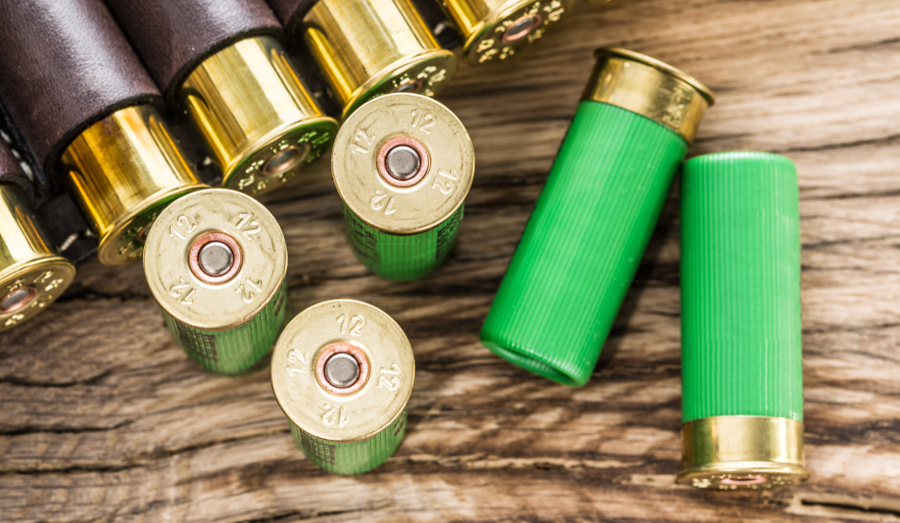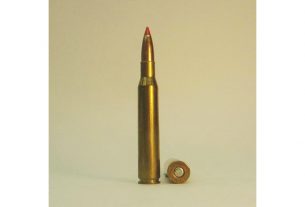The idea of a shotgun in the United States has become almost synonymous with the 12-gauge shotshell. Sure, the 10-gauge may be bigger and the 20-gauge may be lighter, but the 12-gauge’s versatility has made it the most popular shotshell cartridge in the United States bar none.
Unlike pistol and rifle cartridges whose nomenclature is based upon the diameter of the barrel’s bore in inches or millimeters, shotgun cartridges are generally named based upon the gauge system. The number of the gauge indicates the number of round lead balls of a certain diameter that will weigh one pound. So 12 lead balls of 0.729-inch diameter would weigh one pound. That compares to the 10-gauge at 0.775”, the 16-gauge at 0.663”, and the 20-gauge at 0.615”.
Modern 12-gauge firearms are commonly available with chamber lengths of 2 3/4”, 3”, and 3 1/2”. Those indicate the maximum fired length of the shotshell hulls that will fit in those chambers. Firearms chambered for 2 3/4” shells should never be fired with 3” and 3 1/2” ammunition, and firearms chambered for 3” shells should never be fired with 3 1/2” ammunition. Doing so could cause pressures to spike and could cause damage to your shotgun’s receiver or barrel(s).
Older 12-gauge shotguns are often still found with chamber lengths of 2 5/8”, 2 9/16”, 2 1/2”, or even 2”. Those guns should again not be fired with ammunition whose fired length is longer than the chamber. Measuring an unfired round is not an indication of the length of the fired round, so just because an unfired shotshell will fit in a chamber doesn’t mean that it is safe to fire in that chamber.
The 12-gauge shotshell received a significant boost in popularity in the aftermath of World War II. Earlier restrictions on hunting migratory waterfowl had banned the 8-gauge shotgun from use, and the 10-gauge shotguns of the day were often heavy, clunky, and didn’t offer a significant advantage over the 12-gauge. Shotgun sports became very popular after World War II, and were geared towards the 12-gauge, 20-gauge, 28-gauge, and .410 gauge. Leaving out the previously popular 16-gauge hastened its decline in the United States and helped secure the 12-gauge’s place at the forefront of modern shotgunning.
Because of the size of the 12-gauge shell and the variety of lengths it is available in, payloads range from 7/8 oz. for light target and hunting loads all the way up to 2 ¼ oz. for hunting loads in the big 3 1/2” shells. 12-gauge shells can also be found in a huge variety of shot sizes, from #12 shot all the way up to 0000-buck, and everything in between.
Target shooters prefer #8 and #7.5 shot, small game hunters often use #4 to #6 shot, big game hunters prefer the large 00-, 000-, and 0000-buck buckshot, and those interested in home defense often use 4-buck, 1-buck, or 0-buck shot. For those who prefer slugs, they’re available for both rifled bores and smooth bores, with most factory weights coming in between 7/8 oz. and 1 ¼ oz. and being offered in various power levels from low recoil to magnum. Throw in specialty rounds such as flechettes and you have a shell that can just about do it all, handy for hunting and defense within 50 yards.
The 12-gauge is also a handloader’s dream, with shooters being able to take advantage of the 12-gauge’s flexibility to load just about any conceivable payload, from shot to round balls to heavy slugs. Some more adventurous souls have even tried to turn 12-gauge shotguns into a type of poor man’s elephant gun, casting slugs weighing up to 985 grains (2 ¼ ounces). Conservative loading data would send those slugs down the bore at 1,150 feet per second, for nearly 3,000 foot-pounds of muzzle energy.
With 12-gauge shotguns available in side-by-side, over-under, pump-action, single-shot, and autoloading shotguns, the variety of choices for the 12-gauge shooter are nearly endless. And with 12-gauge being far and away the most popular shotshell size in the United States, it’s also the easiest to find on the shelf of your local gun shop or Walmart. That means that it will also be the size of shotshell you’ll be most likely to come across when the stuff hits the fan. For that reason, every prepper should keep at least one 12-gauge firearm in his armory.
This article was originally posted on Red Tea News.





